Greenhouse Millipede Prevention: Get Rid Of Them Naturally
Have you noticed some multi-legged little critters in your greenhouse recently? That is most likely a greenhouse millipede!
In this article – we’re going to be understanding greenhouse millipedes and how they work, how to control them (1) and then finally how to get rid of them.
| Looking for the best polycarbonate greenhouses in 2024? The Best Polycarbonate Greenhouses To Buy In 2024 For People On A Budget |
Here’s the solution in a nutshell:
Table Of Contents
- Understanding The Greenhouse Millipede
- Pros And Cons Of Greenhouse Millipedes
- How To Get Rid Of Greenhouse Millipede Infestations
- Conclusion
- FAQs
- What are the signs of a greenhouse millipede infestation?
- How can I naturally get rid of greenhouse millipedes?
- Are there any plants that repel greenhouse millipedes?
- Can I use chemical pesticides to eliminate greenhouse millipedes?
- How do I prevent future infestations of greenhouse millipedes?
- Are greenhouse millipedes harmful?
How To Quickly Get Rid Of A Greenhouse Millipede Infestation
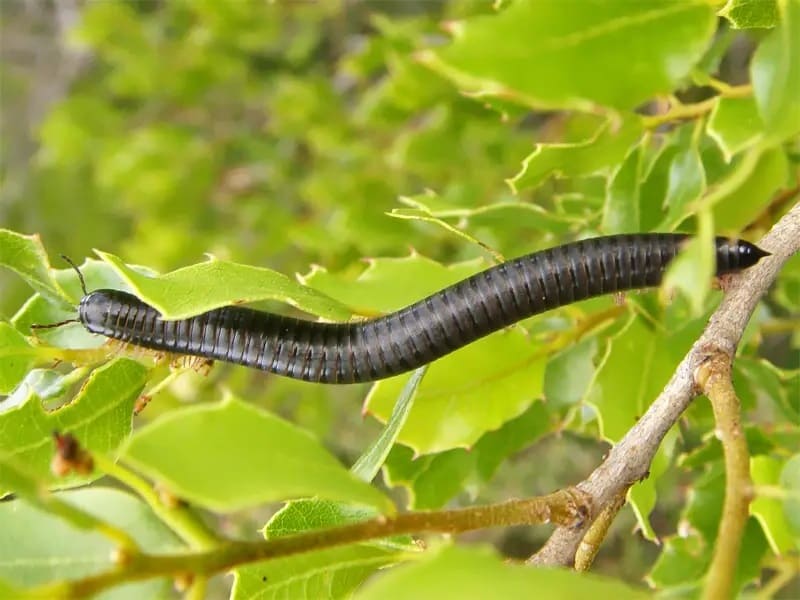
The best way to get rid of a greenhouse millipede is to manually remove them from the greenhouse. Just use a broom or dustpan to sweep them up into a bucket of soapy water, or vacuum them up and get rid of them outside. You DO NOT want to squish them because they release a really smelly odor, so just manually sweep them up and remove them.
Let’s get more into these little greenhouse millipede critters.
Understanding The Greenhouse Millipede
The Greenhouse Millipede is a cylindrical, segmented creature with two pairs of legs per body segment. It reproduces via eggs and undergoes several molts to reach adulthood. The millipede prefers dark, damp environments and is found in various regions across the globe.
What Is A Greenhouse Millipede?

Greenhouse millipedes are small, segmented arthropods, usually about 1 inch long. They stand out with their dark brown to black bodies and rounded segments, each bearing two pairs of legs.
Their movements are slow and deliberate as they navigate their environment using their antennae to sense what’s around them. These creatures prefer moist conditions and are often found in damp locations where there is a lot of organic material (i.e. a greenhouse).
| Millipedes thrive in the damp darkness, recycling plant matter quietly and efficiently. |
Their hard exoskeleton protects them from minor threats while their coiled posture when threatened serves as a defense mechanism against predators. Despite having numerous legs, greenhouse millipedes move at a leisurely pace, making it easy to spot them ambling along garden soil or underneath pots.
Their diet primarily consists of decaying leaves and other dead plant matter, playing an essential role in breaking down organic materials in natural ecosystems.
How Do They Grow And Reproduce?
Understanding the unique characteristics of greenhouse millipedes sets the stage for exploring how they reproduce and grow. Female millipedes lay hundreds of tiny, pearly white eggs in moist soil or under decaying wood, providing a safe environment for their offspring to develop.
These eggs hatch into miniature versions of adult millipedes, beginning a lifecycle that can span several years in ideal conditions. As these young millipedes grow, they shed their exoskeletons multiple times in a process known as molting. Each molt allows them to increase in size until they reach maturity.

The growth rate of greenhouse millipedes is influenced by factors like temperature and food availability. In warmer environments with plenty of organic matter to feed on, they can progress through their growth stages more quickly.
This rapid growth cycle plays a critical role in managing millipede infestations naturally since understanding it helps homeowners anticipate and disrupt their reproduction patterns effectively.
Preventing access to ideal breeding grounds by removing excess moisture and organic debris from around the home can significantly reduce their numbers over time.
Where Do Greenhouse Millipedes Thrive?
Greenhouse millipedes thrive in moist, protected environments where they can find plenty of organic matter to feed on. They prefer habitats that are dark and damp, such as under stones, logs, leaf litter, or mulch.
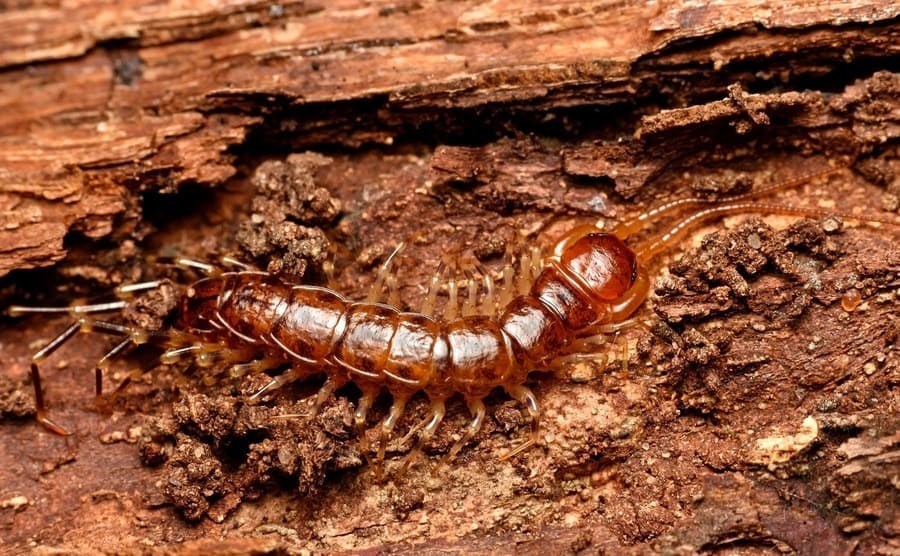
These conditions are not only ideal for their feeding habits but also provide a safe place for laying eggs and hiding from predators.
In gardens and greenhouses, these pests enjoy areas with high humidity and ample vegetation. Overwatered plant pots, dense ground covers, and compost heaps offer perfect spots for millipedes to settle down.
Managing moisture levels and clearing debris regularly can help discourage them from making themselves at home in these spaces.
Geographic Range
Continuing from the greenhouse millipede’s habitat preferences, it is important to note that these resilient creatures are found in a variety of habitats across North America, specifically in moist and decaying organic matter.
They thrive in environments such as gardens, compost piles, and greenhouses.
| The greenhouse millipede can be found in diverse habitats, including gardens, compost piles, and greenhouses. |
Pros And Cons Of Greenhouse Millipedes
Greenhouse millipedes can actually be pretty handy little creatures to have around. Here are some of their benefits:
The Pros
| Pest Control: | They help keep your garden clean by munching on dead plants and fungi. This also means they can help control the spread of unwanted pests that feed on decomposing material. |
| Soil Health: | As they move through the soil and eat, millipedes help break down organic material, which improves soil health and fertility. This makes your garden soil better for growing plants. |
| Low Maintenance: | Millipedes are pretty low-key; they don’t require much from you. As long as there’s enough moisture and food (like dead leaves), they’re happy. |
| Non-Invasive: | Unlike some bugs that can be harmful to your plants, greenhouse millipedes generally don’t harm living plants. They stick to decomposing material, so your live plants are safe. |
| Educational: | If you’ve got kids, millipedes can be cool little critters for them to learn about the ecosystem and the role of decomposers in nature. |
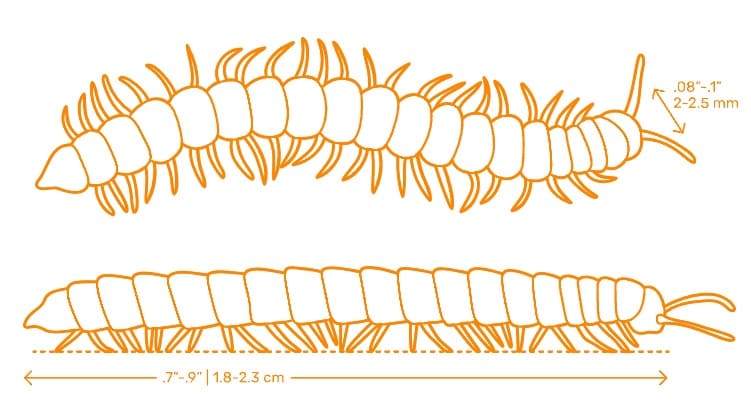
The Greenhouse Millipede has an overall length between .7”-.9” (1.8-2.3 cm) and width of .08”-.1” (2-2.5 mm). The typical lifespan of the Greenhouse Millipede is between 4-7 years.
As you can see above – they can be beneficial for maintaining a healthy garden as long as they are controlled.
But what are the cons?
The Cons
| Overpopulation: | If they find your garden especially comfy, millipedes can multiply quickly. This might lead to them wandering into places you don’t want them, like inside your home. |
| Nuisance Factor: | Even though they’re harmless, having a bunch of millipedes crawling around can be a bit off-putting or annoying for some people. |
| Potential Plant Risk: | While they typically feed on dead plant material, if there’s a shortage, there’s a small chance they might nibble on young seedlings or soft roots. |
| Moisture Issues: | Millipedes thrive in moist environments. If your garden or greenhouse is too damp, it might not only attract millipedes but could also encourage mold and fungus growth. |
| Scare Factor: | Let’s face it, not everyone is a fan of creepy crawlies. Millipedes, with their many legs and segmented bodies, can be a bit unsettling for some folks or guests in your garden. |
How To Get Rid Of Greenhouse Millipede Infestations
Let’s talk about a few ways to get rid of them now. I will break this up into natural methods and chemical methods.
Here is a quick video summary:
Natural Control Methods
Natural control methods for getting rid of greenhouse millipedes include using diatomaceous earth, reducing excess moisture in and around the home, sealing entry points, and maintaining a clean environment to deter infestations.
Keep reading to discover effective ways to eliminate millipedes naturally!
Non-Chemical Solutions For Getting Rid Of Millipedes
Getting rid of millipedes without using chemicals is possible by implementing natural control methods. Here are some effective non-chemical solutions to remove millipedes from your home and prevent infestations:
- Remove excess moisture around the house by fixing leaky pipes and ensuring proper ventilation in damp areas.
- Seal cracks, crevices, and gaps in doors, windows, and foundation to prevent millipedes from entering the house.
- Use a dehumidifier to reduce humidity levels indoors and create an inhospitable environment for millipedes.
- Clear away leaf litter, mulch, and other organic debris from around the house to eliminate potential hiding spots for millipedes.
- Install door sweeps and weather stripping to block off entry points for millipedes.
- Keep the perimeter of the house clean by trimming vegetation and removing piles of wood or compost where millipedes may seek shelter.
Implementing these non-chemical methods can help effectively control and prevent millipede infestations in your home while maintaining an eco-friendly approach to pest management.
Recommendation: Small Dehumidifier:
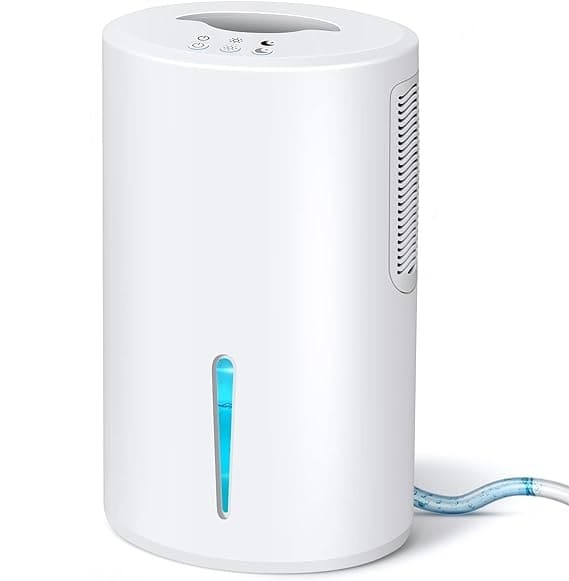
Where To Buy: Amazon
This is a nice little dehumidifier that you can use in your greenhouse to reduce the humidity levels which millipedes hate! Just plug it in, fill it up and you’ll see a noticeable decrease in your little pests.
Chemical Control Methods
Chemical control methods for getting rid of millipedes include using specific pesticides and following best practices for natural pesticide application. To learn more, continue reading the full article.
Types of chemical control products
Chemical control products can be effective in eliminating millipedes from your home. These products are readily available and can be used as a quick solution to the problem. It’s important to use these products with caution and follow all safety instructions provided by the manufacturer. Here are some common types of chemical control products:
- Insecticidal dust: This product can be sprinkled around the perimeter of your home to create a barrier that prevents millipedes from entering.
- Liquid insecticides: These can be applied directly to areas where millipedes are found, such as baseboards, cracks, and crevices.
- Granular insecticides: These pellets can be spread around the exterior of your home to create a protective barrier against millipedes.
- Aerosol sprays: These are useful for spot treatments and can be applied directly to millipedes when they are spotted indoors.
- Natural plant-based insecticides: Some organic options like neem oil or diatomaceous earth can also help in controlling millipede infestations without using synthetic chemicals.
Remember, before using any chemical control product, it’s essential to read and carefully follow the instructions on the label to ensure safe and effective use.
Recommendation: Captain Jack’s Insecticidal Super Soap
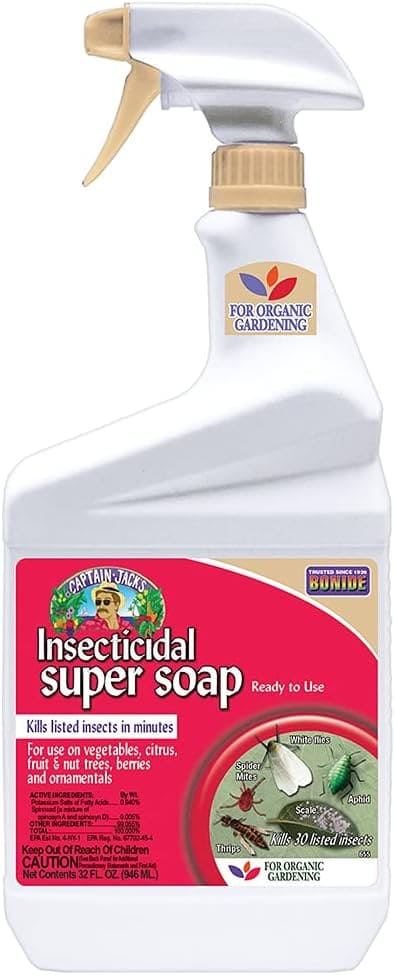
Where To Buy: Amazon
Here is a natural insecticide that you can spray all over your greenhouse. It is a soapy substance that millipedes hate and it worked really well for me.
Best Practices For Using Pesticides In A Natural Way
When using pesticides in a natural way, consider these best practices:
- Select the right pesticide: Choose a natural pesticide that is specifically designed for millipede control and does not harm other beneficial insects.
- Follow instructions carefully: Read and follow the label instructions meticulously to ensure proper application and avoid unintended environmental impacts.
- Target specific areas: Apply pesticides directly to areas where millipedes are present rather than using a blanket application throughout the entire home or garden.
- Use protective gear: Wear appropriate protective clothing, gloves, and masks when handling and applying natural pesticides to safeguard your health.
- Monitor effectiveness: Regularly assess the effectiveness of the pesticide treatment to determine if reapplication is necessary or if alternative methods should be considered.
- Dispose of containers responsibly: After using natural pesticides, dispose of empty containers according to local regulations to minimize environmental impact.
- Consider professional help: If dealing with a severe infestation, seek assistance from a pest control professional with expertise in natural pest management solutions.

Conclusion
Alright, so here’s the wrap-up on dealing with those little greenhouse millipedes. While they have their upsides, like helping with composting and not really harming your plants, they can become quite the nuisance if they overpopulate. They’re not everyone’s cup of tea, especially if they start venturing indoors!
To keep them in check, you’ve got a couple of options. You can go the natural route by reducing moisture, cleaning up garden debris, and sealing up cracks to keep them out. This helps you manage them without any harsh chemicals. For those preferring something a bit stronger, there are chemical methods like insecticidal soaps and sprays that are specifically targeted at pests like millipedes.
Whether you choose to gently escort them out with a broom and a bucket or go for sprays and granules, just remember to follow the product instructions carefully to keep your garden safe and healthy. And hey, if things get too wild, calling in a pro isn’t a bad idea either. They can handle it efficiently and give you back your peace of mind. Happy gardening, and good luck with those millipedes!
| Here are some of my favorite greenhouse accessories: 14 Best Greenhouse Accessories That You Need In 2024 |
FAQs
What are the signs of a greenhouse millipede infestation?
Signs of a greenhouse millipede infestation include finding them in damp, dark areas like basements and crawl spaces, as well as their distinctive cylindrical shape and numerous legs.
How can I naturally get rid of greenhouse millipedes?
You can naturally get rid of greenhouse millipedes by reducing moisture levels in your home, sealing entry points, and using natural repellents such as diatomaceous earth or cedar oil.
Are there any plants that repel greenhouse millipedes?
Yes, some plants known to repel greenhouse millipedes include lavender, chrysanthemums, and mint. Planting these around your home can help deter them from entering.
Can I use chemical pesticides to eliminate greenhouse millipedes?
While chemical pesticides may be effective against millipedes, it’s best to avoid using them indoors due to potential health risks. Opt for natural methods or consult with a professional pest control service for safe options.
How do I prevent future infestations of greenhouse millipedes?
To prevent future infestations of greenhouse millipedes, keep your home dry and well-ventilated, seal cracks and crevices where they could enter, and maintain a tidy yard free from excessive organic debris.
Are greenhouse millipedes harmful?
Not at all! They are not dangerous to humans or animals. They don’t bite, sting or move diseases around. They are just a nuisance because they can quickly accumulate in your garden, home or greenhouse and then die.

References:
1 – Kristi Waterworth, 11 Common Garden Pests To Look Out For This Year, taken from: https://forbes.com/home-improvement/pest-control/common-garden-pests/




